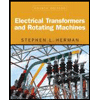
Precision Machining Technology
3rd Edition
ISBN: 9781337795302
Author: Peter, Hoffman.
Publisher: Cengage Learning,
expand_more
expand_more
format_list_bulleted
Concept explainers
Textbook Question
Chapter 2.8, Problem 1RQ
Why is a routine maintenance plan important?
Expert Solution & Answer
To determine
The importance of routine maintenance plan.
Explanation of Solution
In case, the owner of a machine never changes its oil, tires, and brakes at a regular interval, the machine will develop complex problems that may cause:
- Increase in the repair expenses.
- Reduction in the efficiency of the machine.
To cope up with such type of complex problems, a routine inspection of the machine parts must be carried out to identify the problems that may affect the working of machine in future. This type of inspection is known as routine maintenance plan.
Routine maintenance plan is important for the following reasons.
- To prevent expensive repairing.
- To increase the life expectancy of the machinery.
- To increase the working efficiency of the machinery.
- To prevent the loss of economy for the company and employee.
- To provide reliable service.
Want to see more full solutions like this?
Subscribe now to access step-by-step solutions to millions of textbook problems written by subject matter experts!
Students have asked these similar questions
A turbocharged engine with a compression ratio of 8 is being designed using an
air standard cycle. The ambient air is assumed to be 300K and 100 kPa. The
temperature at the end of the compression in the cylinder is desired to be 1000K,
assuming no combustion prior to reaching TDC. At the end of the cylinder
expansion the temperature is also desired to be 1000K. If both the turbine and
the compressor have mechanical efficiencies of 80%, what will be the pressure
ratio of the compressor and what will be the turbine exhaust temperature?
Q6: A turbocharged engine with a compression ratio of 8 is being designed using an
air standard cycle. The ambient air is assumed to be 300K and 100 kPa. The
temperature at the end of the compression in the cylinder is desired to be 1000K,
assuming no combustion prior to reaching TDC. At the end of the cylinder
expansion the temperature is also desired to be 1000K. If both the turbine and
the compressor have mechanical efficiencies of 80%, what will be the pressure
ratio of the compressor and what will be the turbine exhaust temperature?
Q5: A 5.6 litre V8 engine with a compression ratio of 9.4:1 operates on an air-standard
Otto cycle at 2800 RPM, with a volumetric efficiency of 90 % and a stoichiometric
air-fuel ratio using gasoline. The exhaust flow undergoes a temperature drop of
44ºC as it passes through the turbine of the supercharger. Calculate (a) mass flow
rate of exhaust gas and (b) power available to drive the turbocharger compressor.
Chapter 2 Solutions
Precision Machining Technology
Ch. 2.1 - Briefly describe what you believe are the two most...Ch. 2.1 - Briefly describe what you believe are the two most...Ch. 2.1 - What should be done in the case of a personal...Ch. 2.1 - What does OSHA stand for and what is OSHA's...Ch. 2.1 - List three specific clothing items that should not...Ch. 2.1 - If someone working around machinery has long hair,...Ch. 2.1 - Never operate machinery without proper ______ in...Ch. 2.1 - What is PPE?Ch. 2.1 - What is the most common and important piece of PPE...Ch. 2.1 - What does HCS stand for?
Ch. 2.1 - What does GHS stand for?Ch. 2.1 - What is a pictogram?Ch. 2.1 - What does NFPA stand for?Ch. 2.1 - What does HMIS stand for?Ch. 2.1 - Prob. 15RQCh. 2.1 - Prob. 16RQCh. 2.1 - Class A fire extinguishers use ______ as a media...Ch. 2.1 - What class of fire extinguisher should be used on...Ch. 2.1 - What class of fire extinguisher should be used on...Ch. 2.1 - What is the purpose of lockout and tagout...Ch. 2.2 - What is the inch equivalent of 1 millimeter?Ch. 2.2 - What is the inch equivalent of 32.5 mm to the...Ch. 2.2 - Use the decimal equivalent chart on page 69 to...Ch. 2.2 - Use the decimal equivalent chart on page 69 to...Ch. 2.2 - Use the decimal equivalent chart on page 69 to...Ch. 2.2 - What does parallel mean?Ch. 2.2 - What does perpendicular mean?Ch. 2.2 - What is the radius of a 3.65-inch-diameter circle?Ch. 2.2 - What is the circumference of the circle in the...Ch. 2.2 - What are the Cartesian coordinates of the four...Ch. 2.2 - Label the hypotenuse, adjacent side, and opposite...Ch. 2.3 - Define semi-precision measurement.Ch. 2.3 - What is comparison measurement?Ch. 2.3 - List three rules to follow when or storing...Ch. 2.3 - List the parts of the combination set.Ch. 2.3 - Describe four uses of the combination set.Ch. 2.3 - What semi-precision tool is used to take angular...Ch. 2.3 - What type of square has a blade that can be tilted...Ch. 2.3 - Identify the following tools.Ch. 2.4 - List three key points in caring for precision...Ch. 2.4 - What type of fixed gage can be used to check hole...Ch. 2.4 - What type of fixed gage can be used to check a...Ch. 2.4 - How is the go member of a go/no-go ring gage set...Ch. 2.4 - What type of fixed gage can be used to check...Ch. 2.4 - A _____________ can provide a reference plane for...Ch. 2.4 - What two other tools could be used with the answer...Ch. 2.4 - ___________ is the process of attaching gage...Ch. 2.4 - What is the smallest graduation on an English...Ch. 2.4 - What is the smallest graduation on a metric...Ch. 2.4 - A micrometer uses an accurate __________ to...Ch. 2.4 - What is the smallest graduation on an inch...Ch. 2.4 - What is the smallest graduation on a metric...Ch. 2.4 - What is calibration and why is it important?Ch. 2.4 - What is a transfer-type measuring tool?Ch. 2.4 - What are the two basic types of indicator...Ch. 2.4 - Briefly describe the main difference between the...Ch. 2.4 - A sine tool uses the trigonometric function of...Ch. 2.4 - List the two most common methods for measuring...Ch. 2.4 - What are one advantage and one disadvantage of...Ch. 2.4 - A(n) ________ displays a magnified image of a part...Ch. 2.4 - What other tool can be useful for measuring very...Ch. 2.4 - What does CMM stand for?Ch. 2.5 - What are the four basic parts of a process plan?Ch. 2.5 - Briefly define quality control and explain its...Ch. 2.5 - Briefly explain the purpose of a sampling plan.Ch. 2.5 - What is the purpose of an inspection plan?Ch. 2.5 - What is the important factor to consider when...Ch. 2.5 - What does SPC stand for?Ch. 2.5 - What does an X-bar chart track?Ch. 2.5 - What does an R-chart track?Ch. 2.5 - If an X-bar chart graph is between LCL and the...Ch. 2.5 - If an X-bar chart graph falls below the LCL or...Ch. 2.6 - What is the difference between ferrous and...Ch. 2.6 - Briefly describe an alloy.Ch. 2.6 - Name three alloying elements added to steel.Ch. 2.6 - What is cast iron?Ch. 2.6 - What element is in stainless steel that makes it...Ch. 2.6 - Small particles of________ alloys are flammable.Ch. 2.6 - What are the two major benefits of titanium?Ch. 2.6 - What does AISI stand for?Ch. 2.6 - What does SAE stand for?Ch. 2.6 - What is (are) the major alloying element(s) in...Ch. 2.6 - What is (are) the major alloying element(s) in...Ch. 2.6 - What does IADS stand for?Ch. 2.6 - What is the overall purity of 1030 aluminum?Ch. 2.6 - What is (are) the major alloying element(s) of...Ch. 2.6 - What does UNS stand for?Ch. 2.7 - Briefly define the term heat treatment.Ch. 2.7 - Direct hardening can be performed on steel...Ch. 2.7 - ________ is the rapid cooling of metal during heat...Ch. 2.7 - What type of hardening operation that leaves the...Ch. 2.7 - In what two ways can the process described in the...Ch. 2.7 - What method is used to harden low-carbon steels?Ch. 2.7 - List two methods of performing the operation...Ch. 2.7 - After hardening, steel is very hard and brittle....Ch. 2.7 - Briefly define annealing.Ch. 2.7 - Prob. 10RQCh. 2.7 - A dual-chamber furnace allows the user...Ch. 2.7 - In addition to standard PPE, what specific PPE and...Ch. 2.7 - What hardness testing scale uses many different...Ch. 2.7 - What is a Brale penetrator and what hardness scale...Ch. 2.8 - Why is a routine maintenance plan important?Ch. 2.8 - What is a lubricant?Ch. 2.8 - List three methods of applying lubricants to...Ch. 2.8 - List two components of machine tools that should...Ch. 2.8 - Briefly describe a gib.Ch. 2.8 - What are the purposes of cutting fluids?Ch. 2.8 - What are the two major types of cutting fluids?Ch. 2.8 - Prob. 8RQCh. 2.8 - What two ingredients are often used as additives...Ch. 2.8 - Oils that can be combined with water are...Ch. 2.8 - What is the major benefit of cutting fluids that...Ch. 2.8 - What is the difference between synthetic and...Ch. 2.8 - A______ can be used to measure cutting fluid...Ch. 2.8 - List three methods of applying cutting fluids.Ch. 2.8 - Always review the________ before using any...Ch. 2.8 - What type of cutting fluids should never be used...
Knowledge Booster
Learn more about
Need a deep-dive on the concept behind this application? Look no further. Learn more about this topic, mechanical-engineering and related others by exploring similar questions and additional content below.Similar questions
- According to the principles and steps above, draw the kinematic diagram of following mechanisms. Mark the appropriate scale, calculates the degree of freedom. NO.1 NO.2 NO: 3 NO.: 4arrow_forwardAn office building is planned with a lateral-force-resisting system designed for earthquake resistance in aseismic zone. The seismic capacity of the proposed system, expressed as a force factor, is assumed tofollow a lognormal distribution with a median of 6.5 and a standard deviation of 1.5. The ground motionfrom the largest expected earthquake at the site is estimated to correspond to an equivalent force factor of 5.5.(a) What is the estimated probability that the building will experience damage when subjected to the largest expected earthquake? (b) If the building survives (i.e., experiences no damage) during a previous moderate earthquake with aforce factor of 4.0, what is the updated probability of failure of the building under the largest expectedearthquake?(c) Suppose future occurrences of the largest expected earthquake follow a Poisson process with a mean return period of 500 years. Assuming that damage events from different earthquakes are statisticallyindependent,…arrow_forwardDuring a plant visit, it was noticed that a 12-m-long section of a 10-cm-diameter steam pipe is completely exposed to the ambient air. The temperature measurements indicate that the average temperature of the outer surface of the steam pipe is 75°C when the ambient temperature is 5°C. There are also light winds in the area at 10 km/h. The emissivity of the outer surface of the pipe is 0.8, and the average temperature of the surfaces surrounding the pipe, including the sky, is estimated to be 0°C. Determine the amount of heat lost from the steam during a 10-h-long work day. Steam is supplied by a gas-fired steam generator that has an efficiency of 80 percent, and the plant pays $1.05/therm of natural gas. If the pipe is insulated and 90 percent of the heat loss is saved, determine the amount of money this facility will save a year as a result of insulating the steam pipes. Assume the plant operates every day of the year for 10 h. State your assumptions.arrow_forward
- An old fashioned ice cream kit consists of two concentric cylinders of radii Ra and Rb. The inner cylinder is filled with milk and ice cream ingredients while the space between the two cylinders is filled with an ice-brine mixture. Ice cream begins to form on the inner surface of the inner cylinder. To expedite the process, would you recommend rotating the inner cylinder? Justify your recommendation. icecream/ ice-brine Ra Rbarrow_forwardFind temperatures STRICTLY USING RITZ APPROXIMATION METHODarrow_forwardSolve this Problem using RITZ APPROXIMATION. STEP BY STEParrow_forward
- B/40 The body is constructed of a uniform square plate, a uniform straight rod, a uniform quarter‐circular rod, and a particle (negligible dimensions). If each part has the indicated mass, determine the mass moments of inertia of the body about the x‐, y‐, and z‐axes. Answer Given.arrow_forward(read image) Answer:arrow_forward(read image) Answer Givenarrow_forward
arrow_back_ios
SEE MORE QUESTIONS
arrow_forward_ios
Recommended textbooks for you
 Precision Machining Technology (MindTap Course Li...Mechanical EngineeringISBN:9781285444543Author:Peter J. Hoffman, Eric S. Hopewell, Brian JanesPublisher:Cengage Learning
Precision Machining Technology (MindTap Course Li...Mechanical EngineeringISBN:9781285444543Author:Peter J. Hoffman, Eric S. Hopewell, Brian JanesPublisher:Cengage Learning Welding: Principles and Applications (MindTap Cou...Mechanical EngineeringISBN:9781305494695Author:Larry JeffusPublisher:Cengage Learning
Welding: Principles and Applications (MindTap Cou...Mechanical EngineeringISBN:9781305494695Author:Larry JeffusPublisher:Cengage Learning Automotive TechnologyMechanical EngineeringISBN:9781337794213Author:ERJAVEC, Jack.Publisher:Cengage,
Automotive TechnologyMechanical EngineeringISBN:9781337794213Author:ERJAVEC, Jack.Publisher:Cengage, Electrical Transformers and Rotating MachinesMechanical EngineeringISBN:9781305494817Author:Stephen L. HermanPublisher:Cengage Learning
Electrical Transformers and Rotating MachinesMechanical EngineeringISBN:9781305494817Author:Stephen L. HermanPublisher:Cengage Learning

Precision Machining Technology (MindTap Course Li...
Mechanical Engineering
ISBN:9781285444543
Author:Peter J. Hoffman, Eric S. Hopewell, Brian Janes
Publisher:Cengage Learning

Welding: Principles and Applications (MindTap Cou...
Mechanical Engineering
ISBN:9781305494695
Author:Larry Jeffus
Publisher:Cengage Learning

Automotive Technology
Mechanical Engineering
ISBN:9781337794213
Author:ERJAVEC, Jack.
Publisher:Cengage,

Electrical Transformers and Rotating Machines
Mechanical Engineering
ISBN:9781305494817
Author:Stephen L. Herman
Publisher:Cengage Learning
General Industrial Safety; Author: Jim Pytel;https://www.youtube.com/watch?v=RXtF_vQRebM;License: Standard youtube license